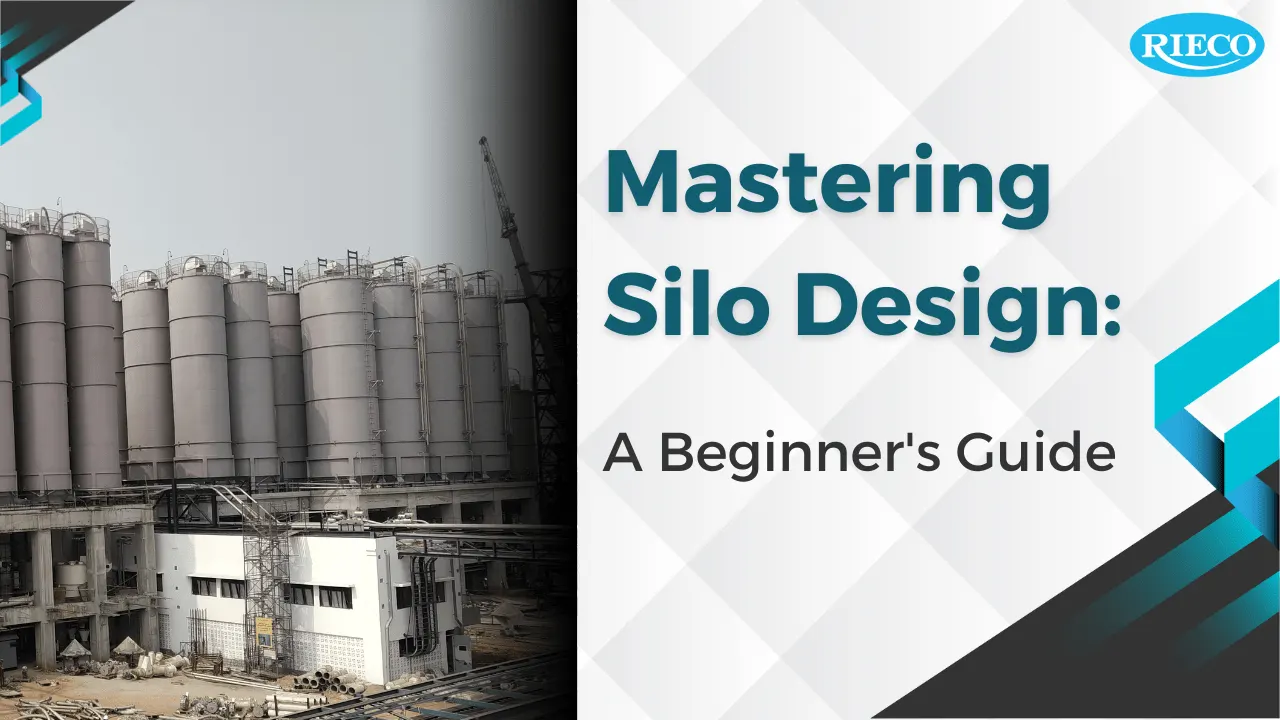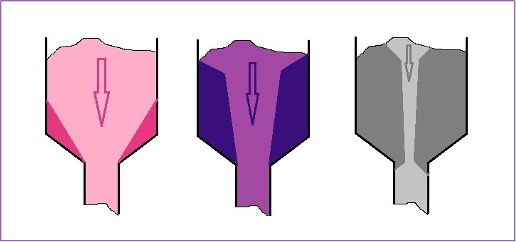- Industries
- Solutions
- Products
- Our Company
- Knowledge
- Contact Us
Mastering Silo Design: A Beginner's Guide to Key Considerations and Discharge Systems

Silo design is a crucial aspect in material handling and storage that, requires careful consideration of several key factors that might impact the performance. A well-designed silo not just stores and discharge materials in a consistent and reliable manner, but also minimizes issues such as bridging and rat-holing.
Have you ever wondered about the different types of flow patterns that can occur in a silo or the potential issues that can arise with silo discharge systems? In this article, we will explore these topics together, as well as discuss the essential factors to consider while designing a silo. This blog will provide you with a strong foundation of knowledge that you can use to deepen your understanding of silos in future blogs.
A mass flow silo for bulk solids is designed to ensure a first-in, first-out (FIFO) flow pattern. In this type of silo, moves uniformly. As the material is discharged from the silo, the material at the top of the silo moves downward to replace the material that has been removed, ensuring a constant flow pattern, and preventing the formation of stagnant zones.

- Uniform Flow: Mass flow silos provide a uniform flow of material, with the entire contents of the silo in motion whenever material is discharged. (FIFO)
- Prevents Segregation: Mass flow silos prevent material segregation, which is a common issue in silos where the material can settle or stratify over time. The constant movement of the material in a mass flow silo helps to keep it well-mixed and prevent segregation.
- Prevents Rat-holing and Bridging: The uniform flow of material in a mass flow silo also prevents the formation of rat-holes and bridges, which can occur when material is allowed to settle or stratify. These obstructions can block the flow of material and lead to downtime and maintenance issues.
- Reduces Material Degradation: Mass flow silos can also help to reduce material degradation, which can occur when material is allowed to sit for long periods of time. The constant movement of the material helps to prevent degradation and preserve the quality of the material.
- Lower Risk of Cross-Contamination: The FIFO flow pattern of a mass flow silo ensures that older material is always discharged first, reducing the risk of cross-contamination or material spoilage.
- Silo quaking- During filling or discharge operations, “silo quaking” can occur, which is a term used to describe the vibration or shaking in a silo that is typically caused by the movement of the material in the silo, generating significant forces that cause the silo to vibrate.
- When dealing with abrasive products, the silo wall can wear.
In funnel flow silos, the flow channel discharges material in the middle first. As the silo empties, material from sides flows into middle and gets discharged.

- The product flows through the core
- Silo wear-out is avoided
- When the silo is filled again before it is completely empty, ageing and decay of the product will occur
- There are stagnant zones
- If the silo is used for multiple products, contamination will occur.
- Sometimes the stagnant zones in silos grow, so that at a certain moment the product only flows from a channel (rat hole) above the opening. Then there is a risk, that flow will stop completely
- The collapse of stagnant zones can lead to uncontrollable flow of product (flooding)

To ensure good discharge, each silo is normally equipped with live bottom arrangements like bin activators, fluidising cones, unloading valves etc. This units ensure consistent and controlled discharge of various materials thus ensuring efficient inventory management and control, benefitting the plant operation and its flexibility, as well as the material supply chain management.

Founded in 1975, Rieco Industries Ltd is a leading manufacturer and supplier of silo discharge equipment and systems for various industries, including chemical, pharmaceutical, food, and mineral processing.
In conclusion, silos play a crucial role in many industries, providing efficient storage and handling solutions for bulk materials. The design also involves determining the appropriate flow pattern and selecting the best discharge system to ensure optimal performance and avoid common issues such as bridging and rat-holing.
Stay tuned for upcoming blogs in which we will dive deeper into these concepts. Curious to know more, write to us at rieco@rieco.com

